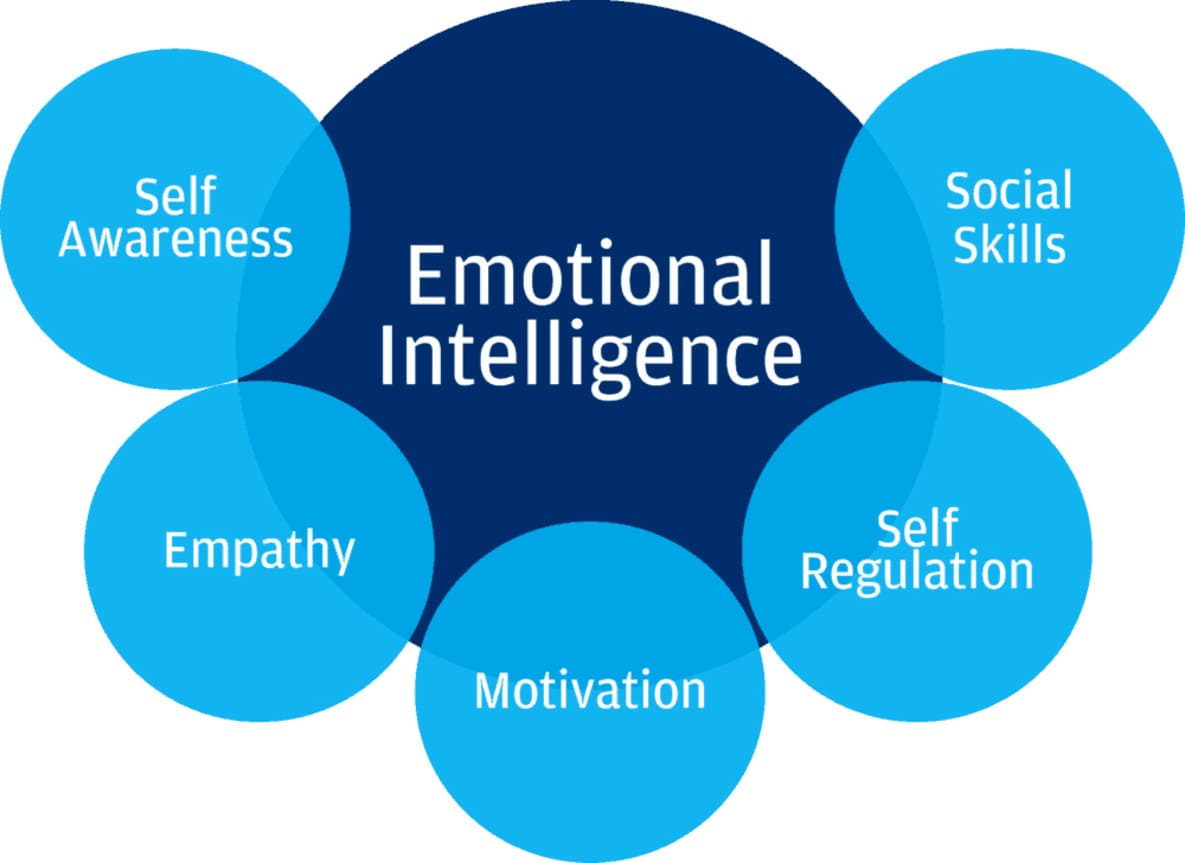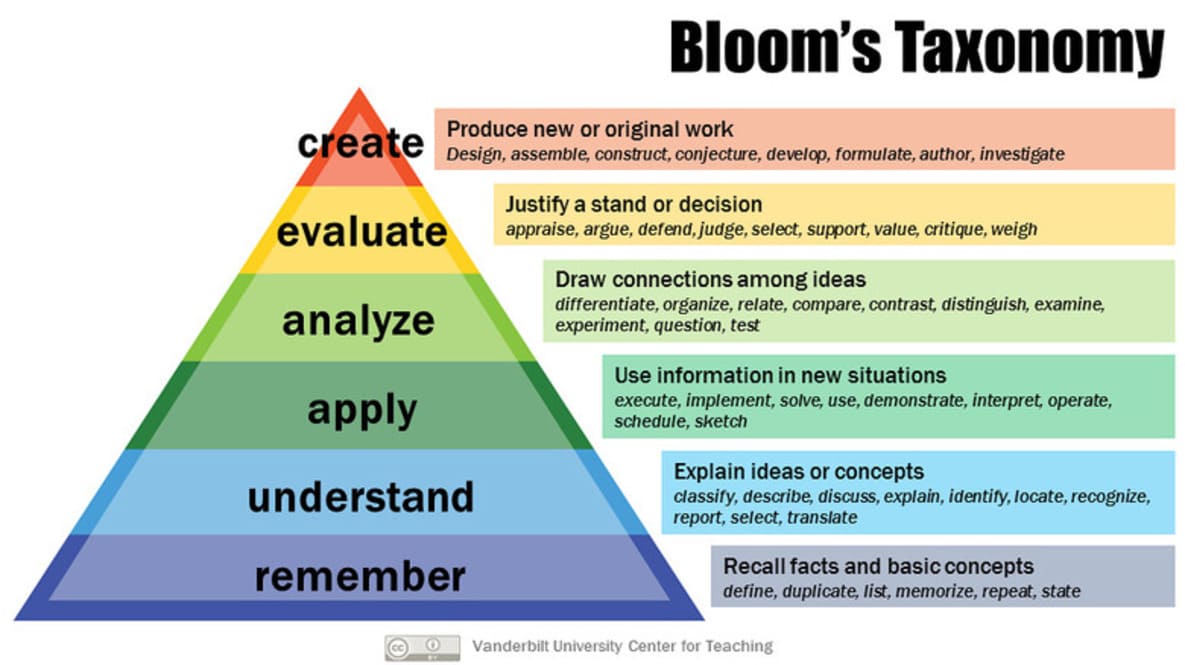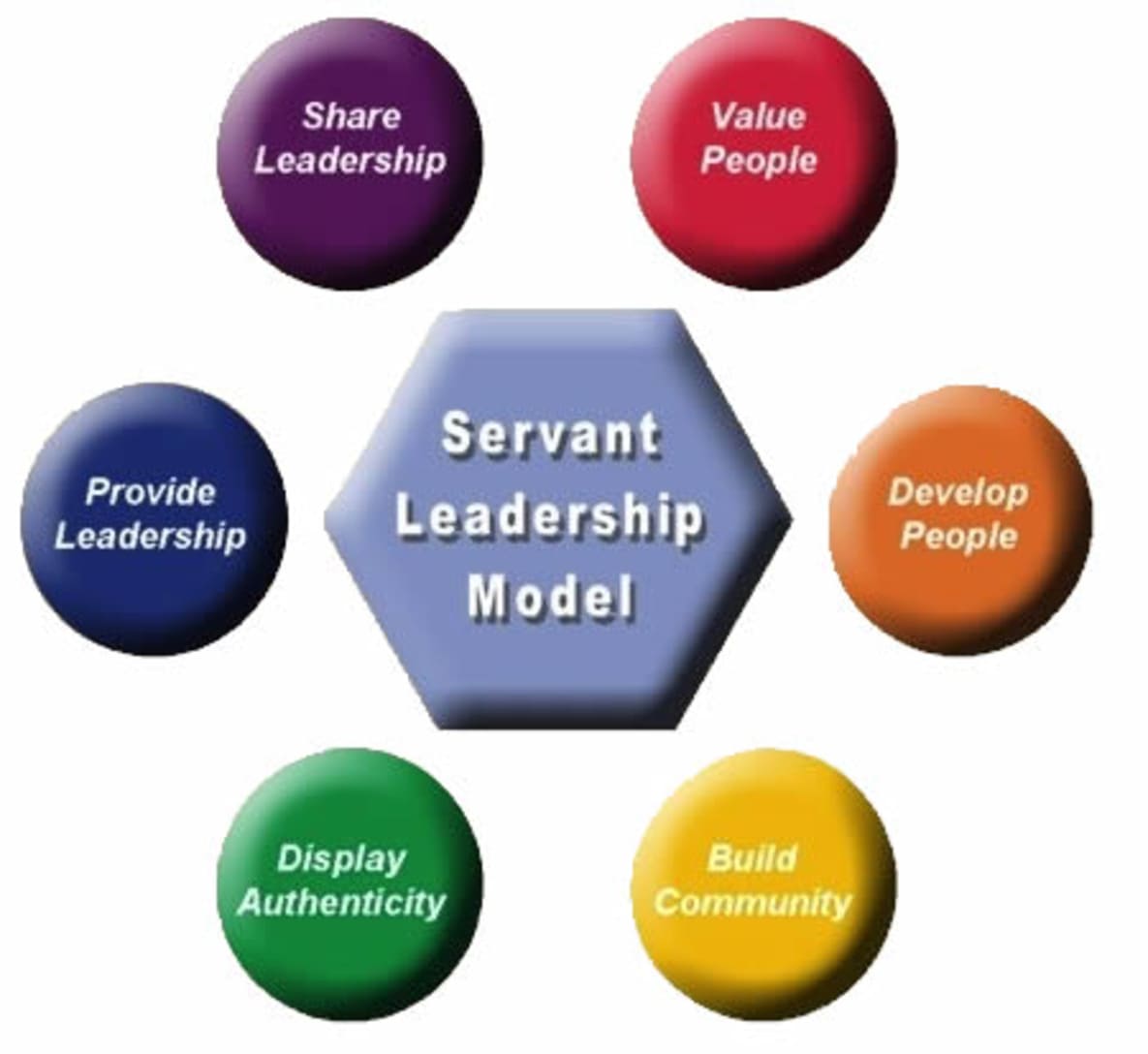Save flat 35% on Assignment
Read this academic document example & Explore New Assignment Help USA's full range of academic writing services designed just for you—because great work deserves the perfect partner. Flip the page and let’s make it happen!
Emotional intelligence, cognitive flexibility, and servant leadership are the three dimensions of development that this study delves into. The focus of this research is on the emotional intelligence framework proposed by Dan Goleman, which places an emphasis on empathy, self-awareness, and communication. To further improve adaptability and resilience, it stresses cognitive flexibility and mindfulness. At the chapter's close, I look at servant leadership, which places a focus on kindness, charity, and the common good. According to the notebook, these practical recommendations can help leaders be more compassionate, adaptable, and effective in their roles at home and in the workplace. Analyzing how people develop impacts outcomes.

Figure 1: Emotional Intelligence
(Source: Kanesan & Fauzan, 2019)
Emotional intelligence is defined as the ability to perceive, understand, and control one's own emotional states as well as the emotional states of others. Emotional intelligence, self-awareness, social competence, and empathy are considered essential. Personal and professional success is dependent on my capacity to communicate effectively, form meaningful connections, and make decisions based on emotional intelligence. According to Daniel Goleman, emotional intelligence is comprised of various attributes, the most essential of which are motivation, self-awareness, empathy, and social skills. According to Goleman (2021), there are several core components of emotional intelligence that help people flourish in their personal, professional, and social life. The emotional transformation cycle includes shock, annoyance, and finally acceptance. Throughout it all, optimism ebbs and flows, reaching rock bottom in shock, rising again in acceptance, and then peaking in problem-solving. Recognizing these changes helps people accept change with confidence, promoting a positive and adaptable mindset.
The importance of emotional intelligence (EI) has been established by a considerable body of research. In addition to furnishing me with novel insights into self-awareness, my research has endowed me with a more comprehensive understanding of the complex dynamics inherent in interpersonal relationships. A deeper understanding of the correlation between emotional intelligence (EI) and life achievements can be attained by applying Goleman's theoretical framework to the study of EI (Damayanti et al. 2023). By consistently applying listening, communication, and problem-solving concepts, I have been able to enhance my proficiency in these domains. To foster meaningful interpersonal exchanges, individuals must possess both self-awareness and the capacity to distinguish between their own affective experiences and those of others (MacCann et al. 2020). Enhancing an individual's problem-solving capabilities and fortitude in the midst of challenges can potentially be achieved through the integration of emotional intelligence (EI) into their daily routine. Further advantages have been identified through subsequent investigations carried out in the respective discipline. By engaging in the process of introspection, one can potentially enhance both their emotional intelligence and their ability to form constructive relationships. Furthermore, the importance of emotional intelligence in the development of emotional literacy and the attainment of inner tranquility must be emphasized.
Tech Innovators Ltd. hired me to be their project coordinator from 2018 to 2020. This was a very trying time for project planning and resource allocation, but I overcame it as a manager. The workplace was tasked with juggling multiple tasks at once due to the rapid expansion that was taking place. However, it was challenging to allocate resources and finish everything that needed to be done because the current method for managing projects was not very scalable. The present situation is the root cause of all of these problems, including missed deadlines, increased team tension, and a general deterioration in project quality (DrSanthosh Kumar & Basha, 2022). I worked with the management team to improve the project management software by adding features that made it more efficient and effective than before. Not only that, but I was also responsible for implementing strategies to create more efficient communication channels and overseeing staff training sessions. I felt compelled to do this because the matter was so urgent. In an effort to get even more out of our resources, we rethought our approach to allocating them. Both the crew's morale and the project's efficiency saw notable improvements after these changes (Jordan & Troth, 2021). Resolving the management challenge was one of the many benefits that these modifications brought about. Due to its many advantages, including better project schedule management and increased teamwork, the new approach was crucial to the successful completion of the projects. Because of my background, I know how crucial it is to be proactive when faced with problems in a dynamic and fast-paced work environment. Also, being successful in a rapidly expanding company requires a mindset that can adapt to new circumstances. What happened allowed me to learn about both of these things.
On the basis of the empirical data provided by Tech Innovators Ltd., a number of results can be evaluated. Continuous monitoring and assessment have to be given priority in order to guarantee that project management systems are able to accommodate the expansion of the organization. It is possible to lessen the possibility of future management difficulties by doing routine inspections and making modifications to the system. This is something that can be accomplished with these modifications. In addition, it is essential to provide funding for the ongoing education of workers. This method ensures that every member of the team is well-informed on the most recent strategies and tools developed for project management. Additionally, it encourages a growth mindset by encouraging curiosity among the members of the team. In addition, it is essential to construct and keep open channels of communication between the members of the team and the management (Lucas, 2020). It is possible to foster problem-solving and teamwork by creating an atmosphere that promotes the rapid identification and settlement of problems. It is imperative that strategic planning be given priority in order to establish a foundation for expansion. A company that has a tendency to grow and has developed systems that can be expanded or modified according to the requirements of the situation is better able to deal with and find solutions to problems. Long-term success in business can be achieved by proactive techniques such as open and honest communication, strategic planning, continuous improvement, and personal development. Each and every one of these is essential to the proactive plan (Tingaz, 2020). The implementation of this strategy will prove to be beneficial in that it will assist in the prevention and mitigation of future management challenges.
The ability to adapt to changing environments is called "cognitive flexibility". Cognitive flexibility to new information and changing settings is needed for this research (Martinez & Dong, 2020). Mindfulness means being there without judgement or interpretation.

Figure 2: Bloom’s Taxonomy
(Source: Gul et al. 2020)
Bloom's Taxonomy ranks educational goals. Remembering, comprehending, applying, analysing, assessing, and producing are cognitive capacities for learning and assessment. Teachers improve learning and cognition with Bloom's Taxonomy (Poluakan et al. 2019). Cognitive skills enhance comprehension and critical thinking. Cognitive flexibility and mindfulness enable focused, non-reactive adaptation. Well-being and success require resilience, problem-solving, and consciousness. Brainstorming yields free expression replies. Images arrange and link mind mapping topics. Both methods encourage creativity, teamwork, problem-solving, and planning.
My career and personal life have been transformed by a focus on cognitive flexibility and mindfulness. When it came to handling situations, I was quite rule-following and stubborn. I was transformed by a demanding work that pushed my creative thinking to its limits. Using cognitive flexibility, I looked into a lot of answers. It led to fresh insights and a better understanding of the issue at hand. My awareness of my environment expanded as a result of my regular mindfulness practise. Among its many health benefits, mindfulness training aids in reducing anxiety and increasing present-moment awareness (Sünbül, 2020). So, paying closer attention, particularly when making decisions, it makes smarter. I am able to manage complexity thanks to my cognitive flexibility and attentiveness. Because of the move, I've had additional opportunities to bond with my coworkers. We have a more agile and powerful workforce. I am already seeing the benefits to my professional and personal development from the mindfulness and cognitive flexibility training, even though it is continuous. As previously said, these practises improve well-being and resiliency.
I was completely absorbed in a challenging task when I was working at the bustling offices of Tech Innovators Ltd. As a result of the rapid pace at which industry trends were shifting, we were confronted with difficulties that we had not anticipated while providing our breakthrough software solution. The members of the organization had a difficult time altering their behavior because they were so firmly committed to their ways. It suddenly occurred to me that in order for us to make it through the storm, we needed to have mental agility. When we had our last-minute meeting as a team, we talked about how important it is to take into account different points of view. When it came to coming up with a novel concept, the front desk receptionist was just as useful as the chief developer. This may come as a surprise to you. We were able to come up with fresh strategies as a result of this conceptual shift. On the other hand, tensions were higher than ever before. In the middle of all the chaos, the introduction of mindfulness served as a beacon of light (Rezaeemanesh et al. 2021). Several brief mindfulness exercises were performed in the minutes leading up to significant meetings. I was in desperate need of these breaks. They were not only effective in enhancing concentration, but they also drew people together. The integration of mindfulness and cognitive flexibility was the catalyst that brought about a revolutionary change in our approach. As a result of our increased cohesiveness and strength as a group, we were able to triumph over the managerial obstacle. It was abundantly evident that mindfulness and adaptation were the threads that weaved innovation and combined success into the fabric of management difficulties. This was proved by the experience.
A company's chances of success in the long run may improve if its culture promotes cognitive flexibility and mindfulness. In order to make the most of cognitive flexibility, it is essential to create a work atmosphere that welcomes many perspectives and encourages a willingness to adapt. One way to encourage flexibility is to create an environment where workers feel empowered to voice their dissenting opinions (Heath et al. 2020). Effortlessly integrate mindfulness practices into every aspect of the company. Promote the cultivation of mindfulness abilities by means of seminars or resources that highlight the significance of remaining in the present moment even when confronted with challenges. In order to create a domino effect throughout the company, it is essential to push for mindfulness practices among leaders (Cásedas et al. 2020). Mindfulness and cognitive flexibility should also be part of training programmes to help workers at all levels acquire these important abilities. Acquire a growth mentality that sees challenges not as obstacles but as chances to learn and be creative. Ensure that these practices are strategically integrated into project management procedures and decision-making processes. Workers' resilience in the face of setbacks will be fortified, and their problem-solving skills will be enhanced (Rydzik & Anitha, 2020). Lastly, I believe that mindfulness and cognitive flexibility can work together to greatly improve workers' health, productivity, and ability to adjust to new situations. To build a workforce that is future-proof and creatively capable of dealing with complexity if anybody embrace these ideas and incorporate them into the company's core values.

Figure 3: Servant Leadership Model
(Source: Mcquade et al. 2021)
The goals of the team and the welfare of others are put first in a servant leader's approach. Servant leadership encourages compassion, teamwork, and my development by prioritizing the team. According to Greenleaf, servant leadership involves putting other people's needs before one's own, encouraging personal growth, and creating a positive work environment. Humility, empathy, and team wellness are essential for a peaceful and fruitful workplace (Kimotho, 2019). A team is strengthened by a servant leader who helps and promotes their subordinates. Humbleness, attentive listening, and helping team members reach their full potential are all hallmarks of this type of leadership.
At Tech Innovators Ltd., where I worked as a team leader, we were given a demanding project that required us to work together closely and come up with creative solutions to problems. In accordance with the principles of servant leadership, I made the deliberate decision to place a greater emphasis on offering support rather than authoritative guidance. As an alternative to attempting to impose my opinions on my coworkers, I created an atmosphere that encouraged open dialogue and made an effort to pay attention to the various perspectives that they expressed. Because I am aware of how essential it is to acknowledge the capabilities of myself, I assigned duties to members of the team whose skills were congruent with the obligations they were responsible for. The dynamic of the squad was significantly altered as a result of this alteration, in my opinion. Those that participated saw a significant improvement in their mood as a result of having their value and achievements acknowledged (Langhof & Güldenberg, 2020). During times of high stress, I shown a strong commitment to collaborative performance by actively engaging in work and providing assistance to other members of the team with whom I was working. Through this experience, I was able to better understand the relevance of servant leadership in terms of fostering teamwork, elevating spirits, and achieving great accomplishments. After giving some thought to my own leadership experience, I came to the conclusion that true leadership is not about being in charge; rather, it is about believing in the potential of people and giving them the ability to make decisions for themselves. As a result of this happening, my leadership style, which places an emphasis on empathy, teamwork, and a genuine dedication to nurturing the development and general wellbeing of every member of the team, was dramatically altered.
The more I learn about servant leadership, the more ideas I get for making management better and more effective. Lifelong learning is at the heart of servant leadership. Leaders can learn about and use servant leadership by going to seminars and meetings. It is important to put an emphasis on working together, actively listening, and having understanding during training. Talking about the importance of servant leadership, performance reviews are a great place to do it. Along with more traditional measures, leaders' abilities to motivate, excite, and help their teams should also be looked at (Blanchard & Broadwell, 2021). The new evaluation criteria may make leaders feel like they need to focus more on the growth and progress of their team members (Darvishmotevali & Altinay, 2022). Mentorship programmes train the worker leaders of tomorrow who will work for businesses. Connections between mentors and mentees help people grow in knowledge and servant leadership. Setting up a feedback process is very important. It is important to be highly critical of a leader's style and the team they've put together. Leaders can better meet the needs of their teams when they can communicate well. Policies in an organization that give rewards based on servant leadership may encourage leaders to encourage behavior that is focused on service. Riches and success should come to people who really want other people to be happy and successful. It is very important to improve leadership skills (Liao et al. 2021). Leaders need to take a look at themselves and put money into their own professional growth if they want to keep humble leadership alive in the workplace. The principles of servant leadership can help make future management practices stronger and more effective in areas like mentoring, education, testing, feedback, reward systems, and ongoing growth. If executives follow these suggestions, they can make the workplace good and useful by focusing on service and teamwork.
Servant leadership, cognitive flexibility, mindfulness, and emotional intelligence (EI) improve academic success, personal growth, and job chances in the reflective notebook. Mindfulness and cognitive flexibility boost creativity and adaptability. Emotional intelligence boosts resilience, problem-solving, and relationships. Open-minded introspection promotes health, cooperation, and adaptation. Service-based leadership promotes empathy, collaboration, and societal transformation. Finally, the notebook offers development mentality and flexible project management guidance. Our strength and collaboration come from these employees. All consequences and safety precautions must be considered in loss-free decision-making. Gather evidence, assess the pros and drawbacks, consult an expert, and create a well-reasoned prediction.
A resilient, flexible, and cooperative organizational culture involves emotional intelligence, cognitive flexibility, mindfulness, and servant leadership. Careful analysis of these three qualities supports this claim. Leadership training is needed to preserve these ideas. This course should teach mindfulness, emotional intelligence, cognitive flexibility, and servant leadership through workshops and resources. Interactive activities and real-world examples will teach and apply these ideas to all leaders. Veteran leaders must teach new leaders emotional intelligence, adaptability, and service. Leadership performance evaluation systems foster accountability and professional progress. Through forming, storming, norming, performing, and adjourning, teams increase communication, trust, and collaboration. These improve leadership and teamwork. Design thinking uses empathy, creativity, and iterative prototyping to address problems. Customer preferences, ideation, and prototype evaluation are key to innovation and user-centric goods and services. Organizational rules like performance reviews and incentives improve emotional intelligence and servant leadership. These tips can boost leadership and teamwork.
